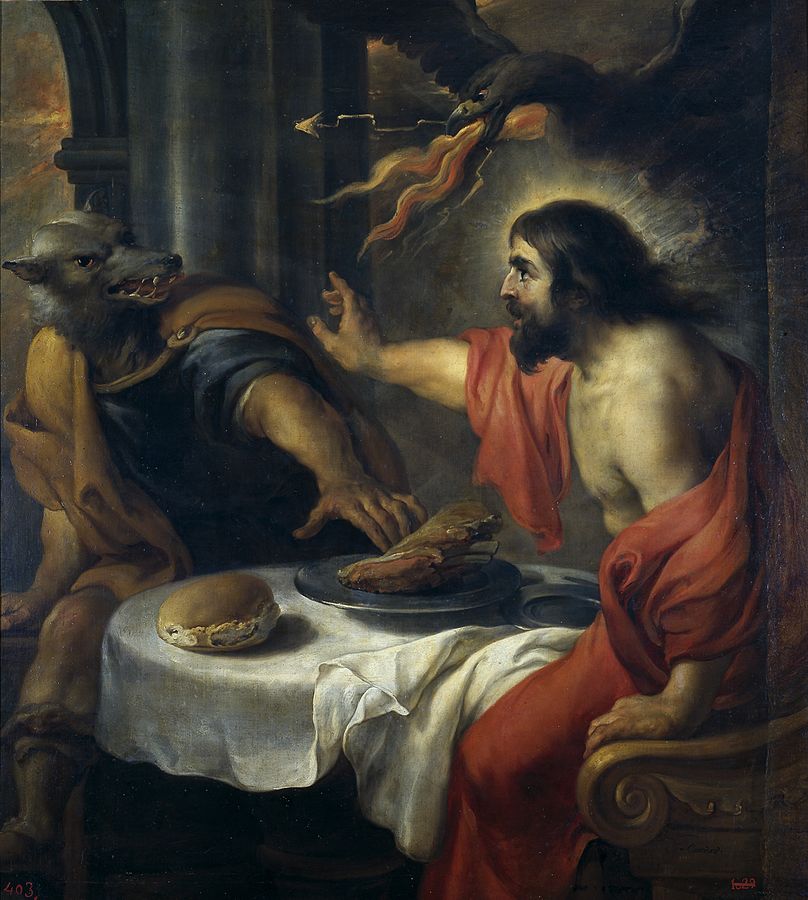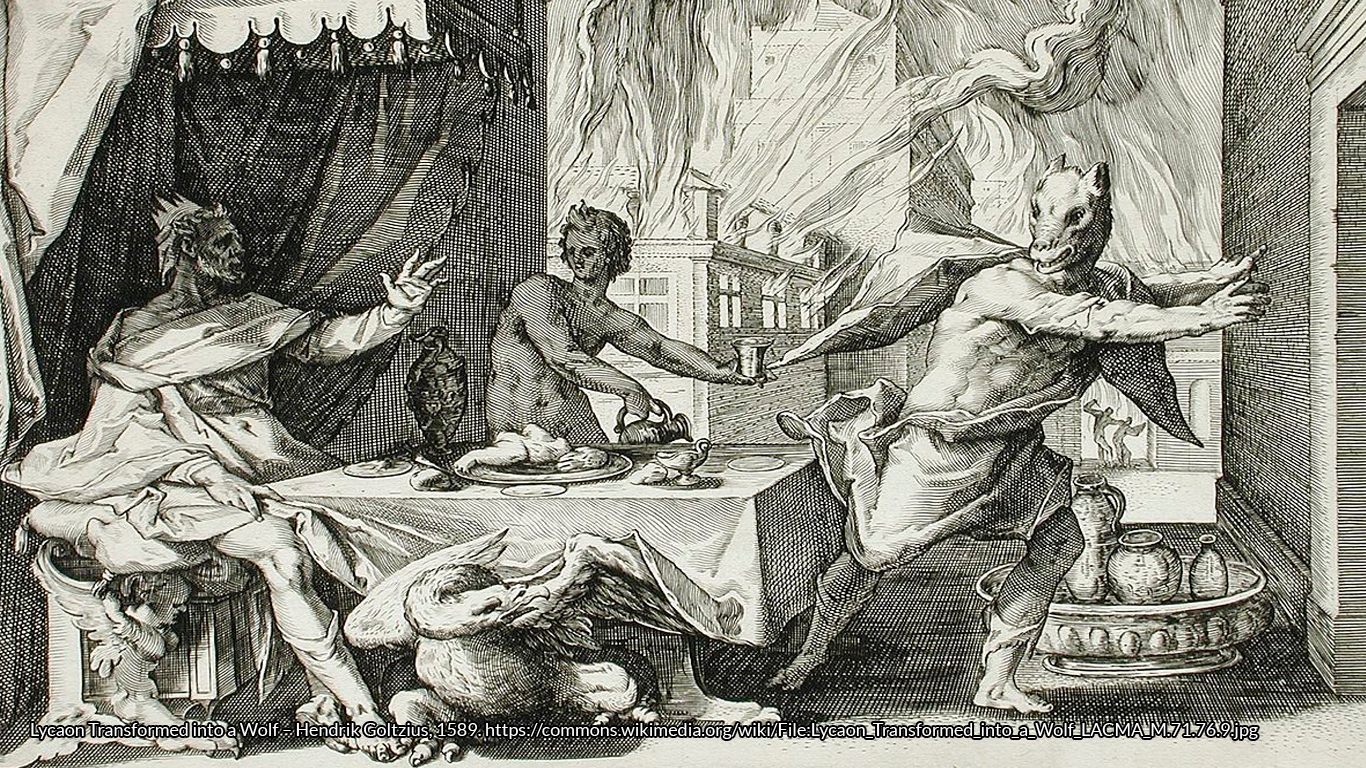The one constant throughout visual and literary representations of the werewolf is the willing – or unwilling – consumption of human flesh. This trope is drawn directly from the ancient origin of the werewolf myth.
If contemporary media culture has taught us anything, it’s that modern audiences are infatuated with the thrill that accompanies blood, gore and dismemberment. The prevalence of film and television shows that depict the visual spectacle of the deconstruction of the human body makes it clear that modern audiences enjoy seeing people ripped to pieces.
Far be it from a morbid fact, the mythology of antiquity invites us to confront the possibility that things have always been this way. As a form of entertainment for ancient audiences, the mythology involving the werewolf is as explicit as the modern interpretations. And this may be more so, considering that the origins of the werewolf include the taboo of cannibalism, as performed by the human before transformation occurs.
In the first century A.D, the Latin author Ovid published the Metamorphoses. A collection of transformation stories, this poem linked hundreds of Greek and Roman myths into one epic that spanned the creation of the world to the age of Augustus. In the first book of the Metamorphoses, Ovid tells the tale of Lycaon. The story is the first instance of bodily transformation in the text, and sets the scene for Jupiter’s destruction of the second generation of humans. The story is told by Jupiter.
In response to rumours about King Lycaon and his behaviour, Jupiter disguises himself as a mortal and visits Lycaon’s palace. When he arrives, he gives the people signs to signify his arrival. Most begin to observe religious rites, but Lycaon mocks them, disbelieving Jupiter’s divinity. In order to prove the mortality of the disguised god, Lycaon plans to attack his houseguest while he sleeps. However, when this proves unsatisfactory, Lycaon instead murders Jupiter’s human companion, boils and roasts the pieces of his desecrated corpse, and mixes the meat with the feast that he provides for Jupiter. In anger at the act of sacrilege, Jupiter uses his lightning bolts to ruin Lycaon’s palace, and transforms Lycaon’s body into that of a wolf:
Frightened out of his wits, Lycaon fled to the country
where all was quiet. He tried to speak, but his voice broke into
an echoing howl. His ravening soul infected his jaws;
his murderous longings were turned on the cattle; he still was possessed
by bloodlust. His garments were changed to a shaggy coat and his arms
into legs. He was now transformed into a wolf. But he kept some signs
of his former self: the grizzled hair and the wild expression,
the blazing eyes and the bestial image remained unaltered.
– Ovid, Metamorphoses, 1.233-239
Ovid’s description of Lycaon’s moral character is a perfect stereotype of behavioural traits possessed by an individual about to be overtaken by werewolfism: vice, immorality, sacrilege, murder, and cannibalism. In the context of Ovid’s poem, the punishment of transformation does not strike when the murder occurs, or even when the corpse is desecrated but when Lycaon mixes the human flesh with the feast offered to Jupiter. Culturally, cannibalism is the greater crime, something that Lycaon understands and plays on in order to disrupt the ideas and values that underpin many cultural beliefs about the value of human life. The Greeks and Romans had an understanding of their position among their natural hierarchy in relation to gods and animals. Lycaon disrupts this hierarchy, calling into question the relevance of humanity as the proverbial ‘top of the food chain’. Lycaon’s act renders his human victim no more than an animal slaughtered for food.

Where, then, do humans fit into this hierarchy? This becomes a question of identity. Cannibalism and identity go hand-in-hand – especially for the werewolf, who already occupies the space between two identities. The consumption of flesh creates a paradox of sorts, questioning how humans can occupy a space within the framework of society if they are unable to differentiate other humans in their natural hierarchy. In Lycaon’s case, his absent moral compass has allowed him to ignore the limitations we set on the world around us: people are not people if they can be food. And it is for this reason that Ovid, through Jupiter, chooses to change Lycaon into the wolf shape: his identity, and the identity of those around him, are marred by the act of cannibalism, so much so that the human body he possesses is changed to suit this new identity, and to restore order to the natural hierarchy.
Understanding the order that comes from Lycaon’s story also means understanding that cannibalism disrupts and dissolves the concepts of ‘humanity’ and ‘savagery’ as binary opposites. These binaries are a surface-level explanation for the actions and reactions to behaviours such as that which Lycaon exhibits. It was clear to the ancient authors that humanity and savagery were not inherently opposite concepts, and were not parallel. They can exist synchronously within the same structure, within the same person, but more than that, they exist within each other. The brutal nature of humanity is well known to those of us who study Greek and Roman cultures: Lycaon’s example is relevant because we understand humans to have the capacity to act in these ways. Recording it in mythology, then, is how we approach these ideas in a manner that they can be expressed, explored, and reintroduced to our cultural understanding.
The ancient authors knew the human body to be malleable and changeable, sometimes in ways that were painful or tormenting. During Lycaon’s transformation, Ovid does not suggest, imply, or state outright that the transformation process is physically painful. Instead, the mental anguish is clear from the language Ovid uses. Taking away the physical human form causes confusion to Lycaon, and the fact that it was his own actions that brought about the change forces Lycaon to confront the reality that this form, of a wolf, is an accurate representation of his actions. More than this, it forces Ovid to express a deep-seated anxiety: if the human body is so changeable, can it be so easily influenced by our behaviour? The cannibalistic tendencies expressed in Ovid’s story convey more than just a simple examination of binary social structures, and instead explores a greater depth of anxiety in its socio-historical context, expressed through a middle ground relevant to antiquity: transformation.
If we can learn anything from Ovid’s Lycaon, it is that there are consequences to engaging in the practice of cannibalism. Lycaon’s own transformation is an exploration of a host of issues, and he has damned generations of werewolves that come after him to a life of ripping out human hearts and eating them. Lycaon is the reason we see so many modern-day werewolves with identity crises, insisting they are bad – not in any physical or experiential manner – but in an inherent, incorporeal way. This is because there is a tradition in place that claims: to be a werewolf, you must first be a bad human.




